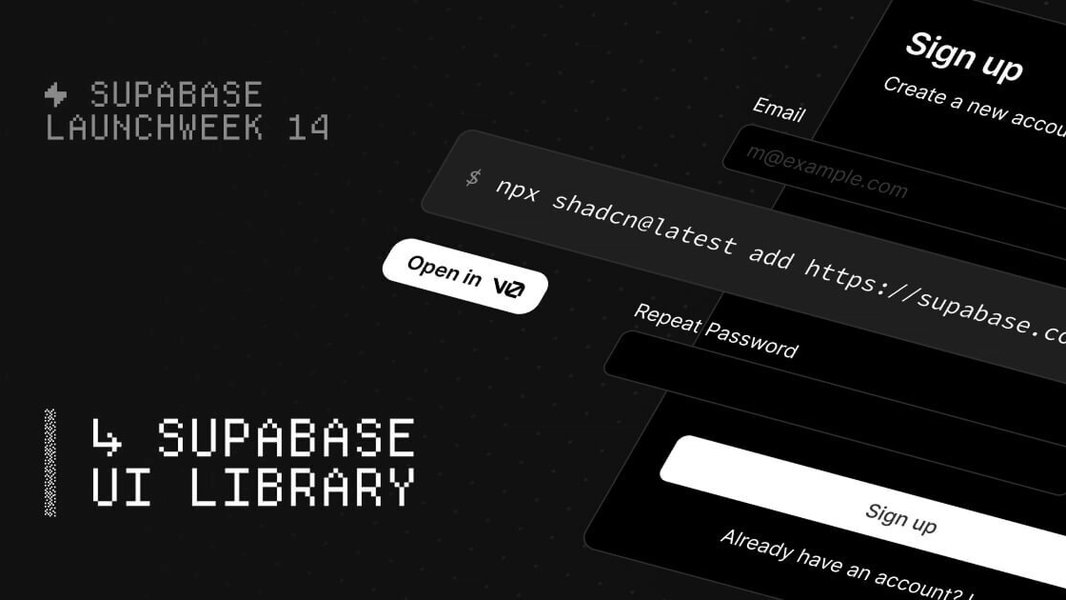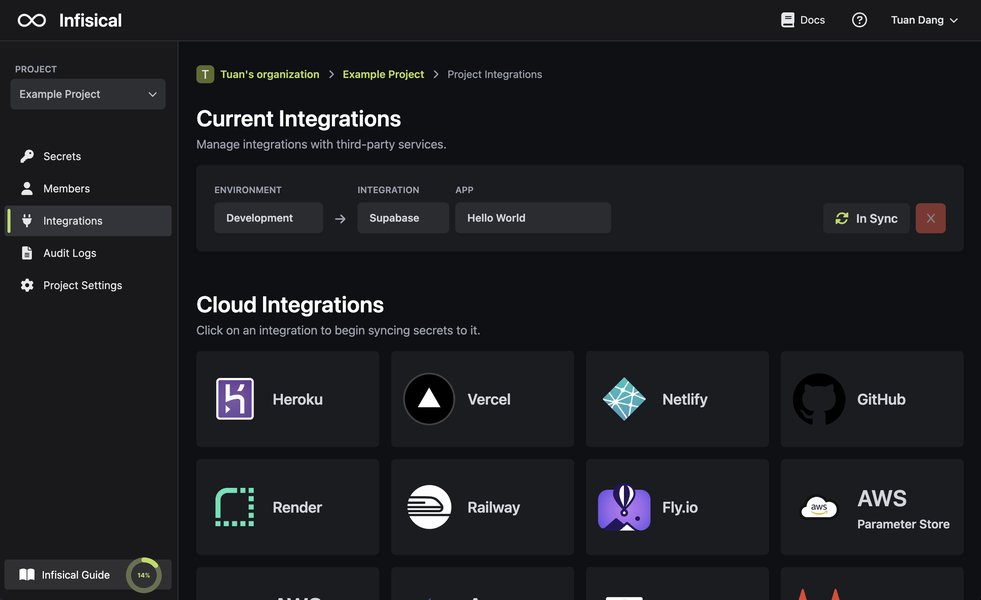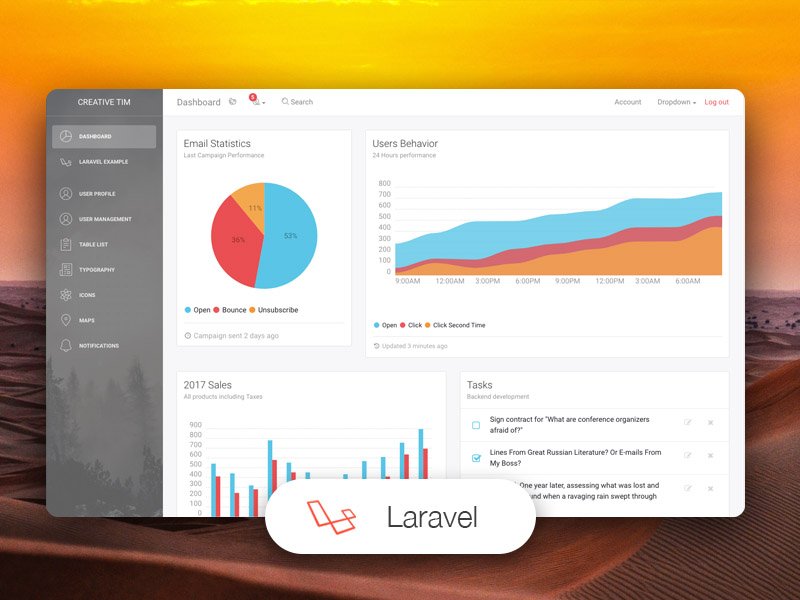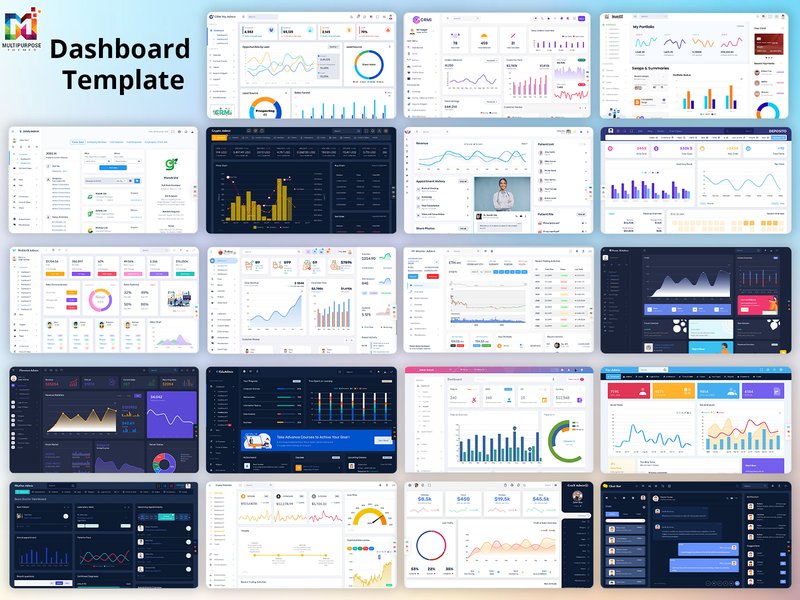
Exploring Backend Development Tools Compatible with Supabase
Discovering alternatives for Bolt.new that streamline backend development, particularly with Supabase integration.
Many developers and entrepreneurs are looking for tools that can accelerate the process of building applications, drawing inspiration from the rapid development capabilities offered by platforms like Bolt.new for frontend development. The desire for a similar streamlined experience extends to the backend, especially when leveraging powerful and flexible backend-as-a-service (BaaS) platforms like Supabase. This exploration delves into whether a direct equivalent to Bolt.new exists for backend development specifically tailored for Supabase, and examines existing tools that offer robust backend development features and strong Supabase integration.
Key Insights on Backend Development Tools and Supabase
- Supabase is a powerful open-source backend alternative: Supabase provides a comprehensive suite of backend services, including a PostgreSQL database, authentication, instant APIs, and storage, making it a strong foundation for various applications.
- Several AI-powered and low-code platforms offer backend capabilities: While a direct "Bolt.new for backend" equivalent dedicated solely to Supabase is not explicitly marketed, many AI-powered and low-code/no-code platforms provide backend generation and integration features that can work effectively with Supabase.
- Integration and flexibility are key considerations: The ideal tool should not only simplify backend development but also offer seamless integration with Supabase's services and provide sufficient flexibility for customization and scalability.
Understanding Bolt.new and the Need for a Backend Counterpart
Bolt.new is recognized as an AI-powered development agent that facilitates the building, editing, running, and deployment of full-stack applications directly from a browser. It simplifies the initial stages of web development by allowing users to generate application foundations quickly, often from natural language prompts. Its strength lies in accelerating the frontend development process and providing a functional starting point.
The demand for a "Bolt.new for backend" stems from the desire to replicate this efficiency for server-side logic, database management, authentication, and other essential backend functionalities. Integrating seamlessly with a robust BaaS like Supabase would further enhance this capability, allowing users to leverage Supabase's features without extensive manual configuration.
Supabase: A Comprehensive Backend-as-a-Service
Before exploring tools that integrate with Supabase, it's crucial to understand what Supabase offers. Supabase is an open-source alternative to Firebase, built around a PostgreSQL database. It provides a suite of tools designed to simplify backend development:
Core Features of Supabase:
PostgreSQL Database
At its core, Supabase offers a full PostgreSQL database, known for its reliability and flexibility. This provides developers with a powerful relational database capable of handling complex data structures and queries.

Supabase UI Library for building interfaces.
Authentication
Supabase provides built-in authentication services, supporting various methods like email/password, social logins, and phone authentication. It also includes Row Level Security (RLS) to secure data within the database.
Instant APIs
One of Supabase's key features is the automatic generation of RESTful and GraphQL APIs directly from your database schema. This allows for rapid data access and manipulation without manual API development.
Edge Functions
Supabase Functions (built on Deno) allow developers to write and deploy custom server-side logic without managing servers. These can be triggered by database events or HTTP requests.
Realtime Subscriptions
Supabase enables real-time data synchronization, allowing applications to subscribe to database changes and receive updates instantly.
Storage
Supabase Storage provides a scalable and secure way to store and manage files, such as images and videos.

Example of Supabase integration.
The comprehensive nature of Supabase makes it an attractive backend option, and tools that can streamline development on top of it are highly valuable.
Exploring Tools with Backend Development Capabilities and Supabase Integration
While a direct Bolt.new equivalent specifically for Supabase backend might not be a single, widely marketed product, several platforms and tools offer features that address the need for faster backend development and provide integration with Supabase. These range from AI-powered coding assistants to low-code development platforms.
AI-Powered Coding Tools with Backend Potential:
Bind AI
Bind AI is mentioned as an impressive option for code generation across numerous programming languages. While its primary focus might not be solely on backend, its ability to generate code across 72 languages suggests it could be used to accelerate the creation of backend logic and API interactions compatible with Supabase.
CerebrasCoder
CerebrasCoder is highlighted as a free and open-source alternative with potential for flexibility and control. Open-source tools often allow for deeper customization and integration, which could be beneficial for tailoring backend solutions to work with Supabase.
Cursor AI
Cursor AI is another AI coding tool that focuses on improving developer productivity through code recommendations and assistance. Tools like Cursor AI can help developers write backend code more efficiently, including the code needed to interact with Supabase services.
Replit
Replit is a cloud-based IDE that supports various programming languages and offers features for building and deploying applications. Its AI agent capabilities can assist in coding, and its environment allows for integrating with external services like Supabase for backend functionality.
Hostinger Horizons
Described as a user-friendly no-code AI platform, Hostinger Horizons aims to allow users to develop complete web applications without writing code. While its focus might be broader than just backend, a comprehensive no-code platform like this would likely include ways to define data structures and logic that could then connect to a Supabase backend. The fact that it comes pre-configured with hosting also simplifies the deployment aspect.
Softgen
Softgen is another platform mentioned as a vibe coding platform and a Bolt.new alternative. Platforms focusing on "vibe coding" often emphasize a more intuitive and perhaps visually-driven approach to development, which could extend to defining backend processes and data models for use with Supabase.
OpenBolt.dev
Positioned as a link between Bolt.new and Bolt.diy, OpenBolt.dev provides a cloud-based alternative with additional features. Depending on these features, it might offer more robust backend development capabilities or smoother integration pathways with BaaS platforms like Supabase compared to the original Bolt.new.
Low-Code and No-Code Platforms with Supabase Integration:
Bubble
Bubble is a well-established no-code platform for building web applications with rich functionality, including databases, user authentication, and API integrations. Bubble's extensive plugin ecosystem and database capabilities make it suitable for building complex backends without code. It's possible to integrate Bubble with Supabase to leverage Supabase's database and other services while using Bubble for the no-code development interface and workflow logic.

Admin dashboard templates can be used to build interfaces for managing data in Supabase.
UI Bakery
UI Bakery is presented as a low-code toolkit for building internal tools and operational apps with strong data connectivity. It offers granular control over UI design and backend logic. This focus on data connectivity and backend logic makes it a strong candidate for integrating with and building applications on top of a Supabase backend, especially for internal tools or admin panels.
Lovable
Lovable is an AI app builder that emphasizes design and user experience. While its strength lies in creating visually appealing interfaces, it also offers integration with backend services. Its focus on brand and UX for MVPs could be combined with Supabase for the backend infrastructure, allowing for the rapid creation of a functional and good-looking application.
Backend Management Tools and Admin Panels for Supabase:
Beyond general-purpose development platforms, there are tools specifically designed to help manage backend data and build admin interfaces. While not direct "Bolt.new for backend" equivalents for building the entire backend logic from scratch via prompts, they are crucial for interacting with and managing data within a Supabase instance.
Retool
Retool is mentioned in the context of building a Supabase admin panel. Tools like Retool specialize in quickly building internal tools and admin interfaces on top of existing data sources, including Supabase. This allows for easy creation of dashboards and interfaces to manage the data stored in your Supabase database.

Admin dashboard templates can facilitate building backend management interfaces.
N8N
N8N is a workflow automation tool that can integrate with various applications, including Supabase. While not a backend builder itself, it can be used to create backend workflows and automate tasks that interact with your Supabase data and services.
Integration with Supabase
The key to finding a suitable tool is its ability to integrate effectively with Supabase. Most of the platforms mentioned above offer ways to connect to external databases and APIs. For Supabase, this typically involves configuring the connection using the provided API keys and URLs.
Supabase provides client libraries (like supabase-js) and clear documentation on how to interact with its services programmatically. Tools that allow custom code or have built-in connectors for databases can leverage these resources to interact with your Supabase backend for data operations, authentication, and file storage.
This video compares Bolt.new and Lovable, highlighting backend integration aspects relevant to connecting with services like Supabase.
For platforms that generate code, the generated code would ideally include the necessary configurations and functions to interact with the Supabase API. For no-code platforms, the integration would be handled through visual interfaces for connecting to external databases and defining data operations.
Comparing Alternatives for Backend Development with Supabase
Here's a comparison of some of the alternatives, focusing on their potential for backend development and Supabase integration:
| Tool | Primary Focus | Backend Capabilities | Supabase Integration Potential | Notes |
|---|---|---|---|---|
| Bind AI | Code Generation (72 languages) | Can generate backend code | High (generate code for Supabase interactions) | Focus on code output, requires development knowledge. |
| CerebrasCoder | Open-Source AI Coder | Potential for backend code generation and customization | High (open-source allows deep integration) | Requires self-hosting or managing the environment. |
| Cursor AI | AI Coding Assistant | Assists in writing backend code | High (helps write Supabase interaction code) | Enhances developer productivity, not a full no-code builder. |
| Replit | Cloud IDE with AI | Full-stack development environment | High (can integrate using libraries and APIs) | Coding required, but environment simplifies setup. |
| Hostinger Horizons | No-Code AI Web App Builder | Defines data structures and logic visually | Moderate to High (depends on integration features) | User-friendly, includes hosting. |
| Softgen | Vibe Coding Platform | Likely includes visual backend definition | Moderate to High (depends on integration features) | Focus on intuitive development. |
| OpenBolt.dev | Cloud-based Bolt alternative | Potential for enhanced backend features | Moderate to High (depends on specific features) | Builds on the Bolt concept. |
| Bubble | No-Code Web App Builder | Full backend functionality without code | High (integrates via plugins/APIs) | Powerful for complex apps, steeper learning curve than simpler builders. |
| UI Bakery | Low-Code Internal Tools | Granular control over backend logic and data connectivity | High (designed for data source integration) | Best for internal tools and admin panels. |
| Lovable | AI App Builder (Design focused) | Backend service integration | Moderate (integrates with backend services) | Strong on UI/UX, backend integration exists. |
| Retool | Internal Tools Builder | Builds interfaces to manage backend data | Very High (designed for database integration) | Excellent for admin panels and data management on Supabase. |
| N8N | Workflow Automation | Automates tasks interacting with backend | Very High (direct integration with Supabase) | For building backend workflows, not the full backend structure. |
As seen in the table, while no single tool is explicitly branded as "Bolt.new for Supabase backend," several platforms offer capabilities that, when combined with Supabase, can significantly accelerate backend development. The best choice depends on your specific needs, technical expertise, and the complexity of the application you intend to build.
Challenges and Considerations
While these tools offer promising solutions, there are still challenges and considerations when using them for backend development with Supabase:
Complexity of Backend Logic
Backend development often involves complex business logic, data validation, and security measures. While AI and no-code tools can generate basic structures, implementing intricate logic might still require manual coding or a deeper understanding of the platform's capabilities.
Customization and Flexibility
Some tools might offer less flexibility than writing custom backend code. If your application has unique requirements or needs highly optimized performance, a no-code or low-code platform might have limitations.
Scalability
Ensure that the tool you choose, in conjunction with Supabase, can scale to meet the demands of your application as it grows. Supabase is designed to be scalable, but the integrating tool should not introduce bottlenecks.
Vendor Lock-in
Using proprietary no-code or low-code platforms can sometimes lead to vendor lock-in. Opting for tools that generate portable code or integrate with open-source platforms like Supabase can mitigate this risk.
Frequently Asked Questions
Is there a direct Bolt.new equivalent specifically for Supabase backend?
While there isn't a product explicitly marketed as a direct "Bolt.new for Supabase backend," several AI-powered and low-code platforms offer backend development features and integrate with Supabase.
What are the advantages of using Supabase for backend?
Supabase offers a powerful PostgreSQL database, built-in authentication, instant APIs, edge functions, real-time subscriptions, and storage, providing a comprehensive and scalable backend solution.
Can low-code platforms build complex backends with Supabase?
Yes, powerful low-code platforms like Bubble and UI Bakery can be integrated with Supabase to build complex backend logic and manage data, although intricate requirements might still benefit from some level of coding or deeper platform expertise.
Are there open-source alternatives for backend development with Supabase?
Yes, open-source AI coding tools like CerebrasCoder can be used to generate backend code, and platforms that integrate with Supabase and are open-source provide more control and transparency.
How do these tools integrate with Supabase?
Integration typically involves using Supabase's client libraries, APIs (REST or GraphQL), and connection details to allow the development tool to interact with the Supabase database, authentication, and other services.
References
Last updated May 4, 2025